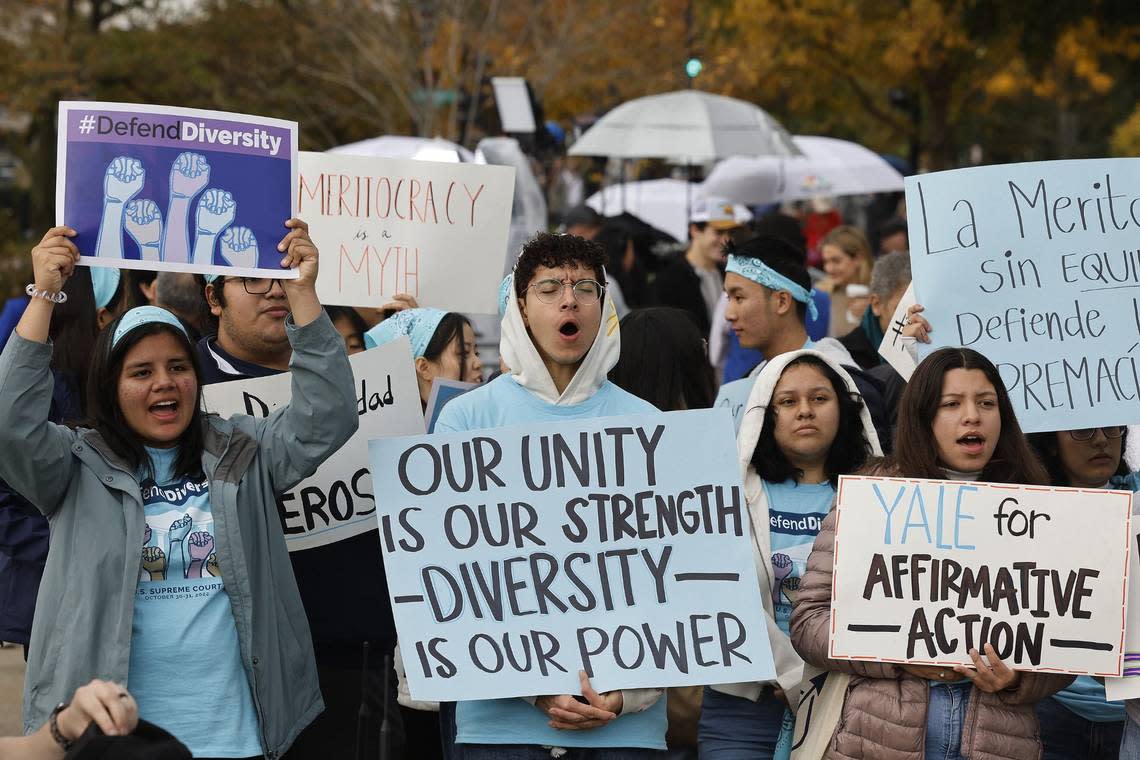How Sacramento State fostered a diverse student body without the help of affirmative action

Sacramento State is one of the most diverse colleges in all of California — a state that stopped allowing race to be a criteria for admission in its public academic institutions in 1996 with the passage of Proposition 209.
In private colleges and the public universities of other states, racial and ethnic background was a consideration in college admissions until the Supreme Court struck down that practice as unconstitutional in a ruling this month. This ended affirmative action for institutions around the country, joining California and other states who had already banned the practice.
This decision was met with concern that without affirmative action there would be no counterbalance to the access and privilege that white students have in entering institutions of higher education. However, California public colleges and universities have continued to rank among the most diverse institutions in the nation despite the absence of affirmative action over the past decades.
According to a 2020 ranking by USA Today, there were eight California schools identified in the top 25 most ethnically diverse student bodies in the country.
Among the schools mentioned was Sacramento State, San Francisco State, Cal State East Bay, Stanford, UCLA, UC Santa Barbara, UC Davis and University of San Francisco.
During a June interview with The Sacramento Bee, incoming Sacramento State President J. Luke Wood, also a Sacramento State alumnus, recalled the days when he went there between 2000 and 2007.
Wood said “even back then, the focus was really on students of color in general.”
“Black students, Latinx students, Native American students, Southeast Asian students, Hmong, Cambodian, Laotian, Vietnamese and recognizing that if we all work together as a team that we could help to change that campus,” Wood said. “That’s why I really truly believe in diversity and inclusion. I believe that it serves as a driver for innovation and excellence when it’s embraced and when it’s not embraced, I think you have environments where people don’t succeed in the way they should.”
Efforts to maintain diversity on campus
Luke’s predecessor President Robert Nelsen has led Sacramento State since 2015 and oversaw efforts to support diversity on the campus.
He told The Sacramento Bee that the university was able to increase diversity during his tenure by making sure the campus was a place that students felt like they belonged and wanted to be at.
One example, Nelsen said, are the various cultural affinity centers tailored to ensure people of all ethnicities are represented on campus. There are centers for students of Asian, South Asian and Pacific Island descent, students who are undocumented or who come from families without documents, students who are American Indian and students who are African American.
Nelsen called it an “important win” for his tenure during an interview with The Bee, saying the affinity centers were “really critical” for what he wanted to accomplish as president.
“We’re a stronger university where there’s more access,” Nelsen said. “We tried to give them the opportunities and we also doubled the number of scholarships on our campus. That was deliberate.”
Regarding the affirmative action decision made by the Supreme Court, Nelsen said the decision sent a negative message.
“It’s not about whether or not we should have some sort of criteria,” Nelsen said of the Supreme Court decision. “It’s about whether or not diversity matters at a university. And what this decision said is that diversity doesn’t matter.”
He said college should always be about access and “allowing as many students as possible into the university.”
Nelsen has been very intentional about building and maintaining diversity at Sacramento State. He hopes that other university presidents share the same intention, despite the court ruling.
“Look for pathways to make it possible to come recruit and be active in those neighborhoods where students may not have that possibility or may not be dreaming of that possibility of where you can help them dream of the possibility. You can help them make it happen,” Nelsen said.
Following the court’s ruling, what now?
Nelsen said the court ruling should not discourage students throughout the country from applying to college.
“We proved at Sac State we can be (one of the) most diverse universities in the United States. We proved it can happen by making sure that access was what we were all about,” Nelsen said.
His hope is universities do not stop creating possibilities for students.
The same goes for U.S. President Joe Biden, he said during a news conference that colleges and universities should continue to maintain their commitment to “support, retain, and graduate diverse students and classes.”
Biden strongly disagreed with the decision made by the court and shared his disappointment saying it “rolls back decades of precedent and momentous progress.”
“Many people wrongly believe that affirmative action allows unqualified students to be admitted ahead of qualified students. This is not how college admissions work,” Biden said. “Rather, colleges set out standards for admission, and every student has to meet those standards. Then, and only then, after first meeting the qualifications required by the school, do colleges look at other factors in addition to their grades, such as race.
Biden said not to allow the Court decision become a permanent setback for the country.
He plans to work with the Department of Education to analyze practices to help build a more inclusive and diverse student body at U.S colleges and universities, and also practices that hold those efforts back, such as legacy admissions and other systems that expand privilege rather than opportunity.


